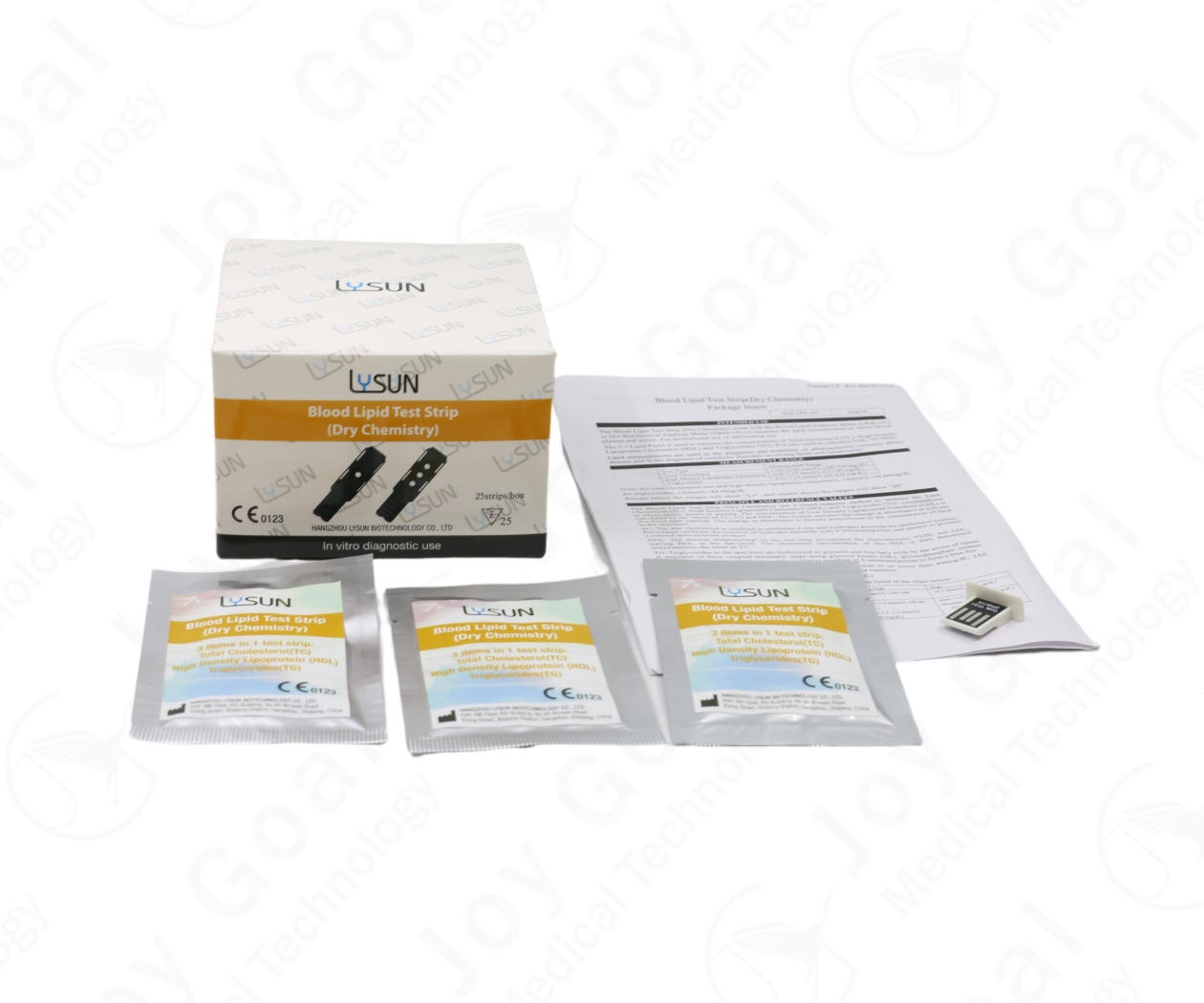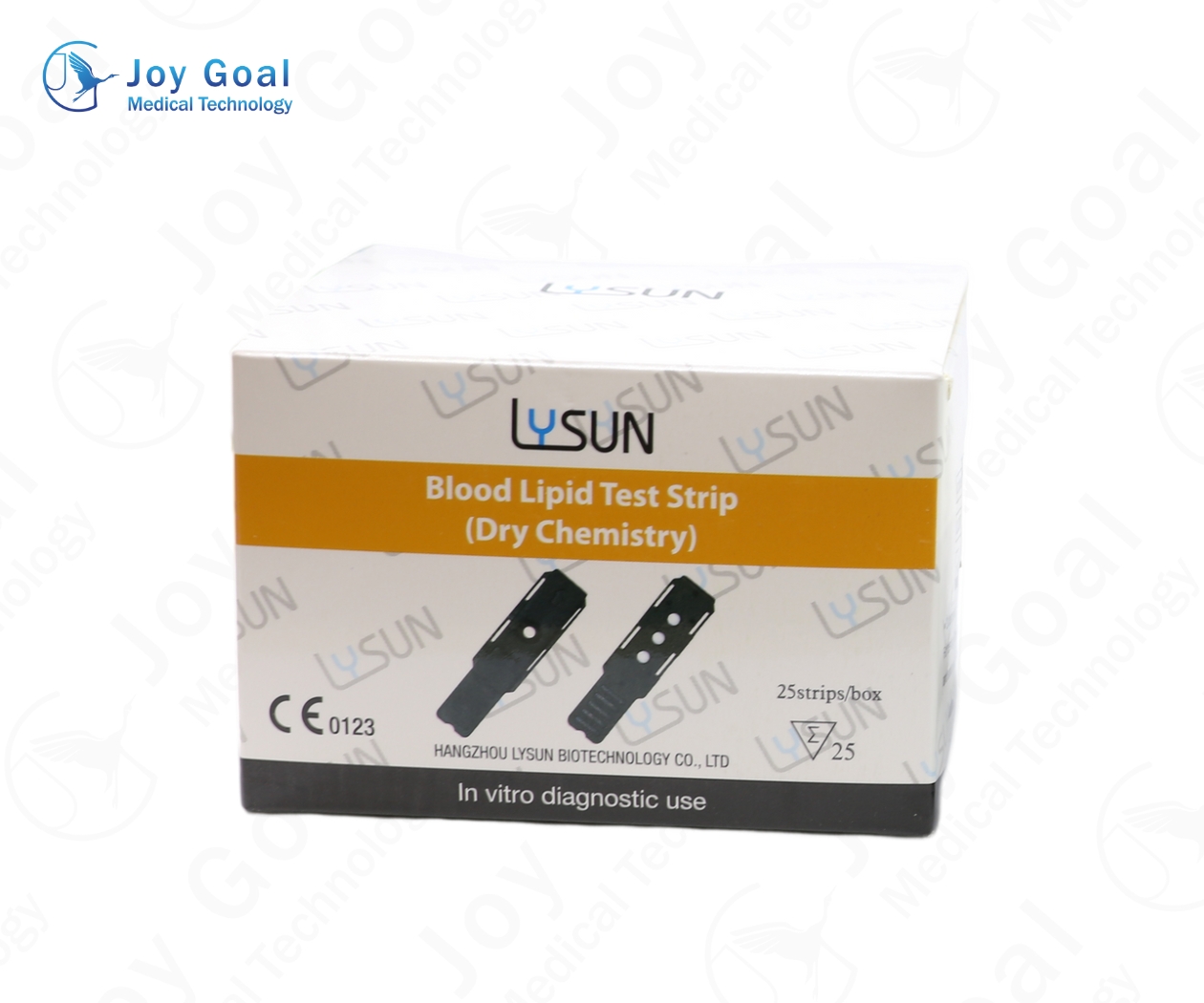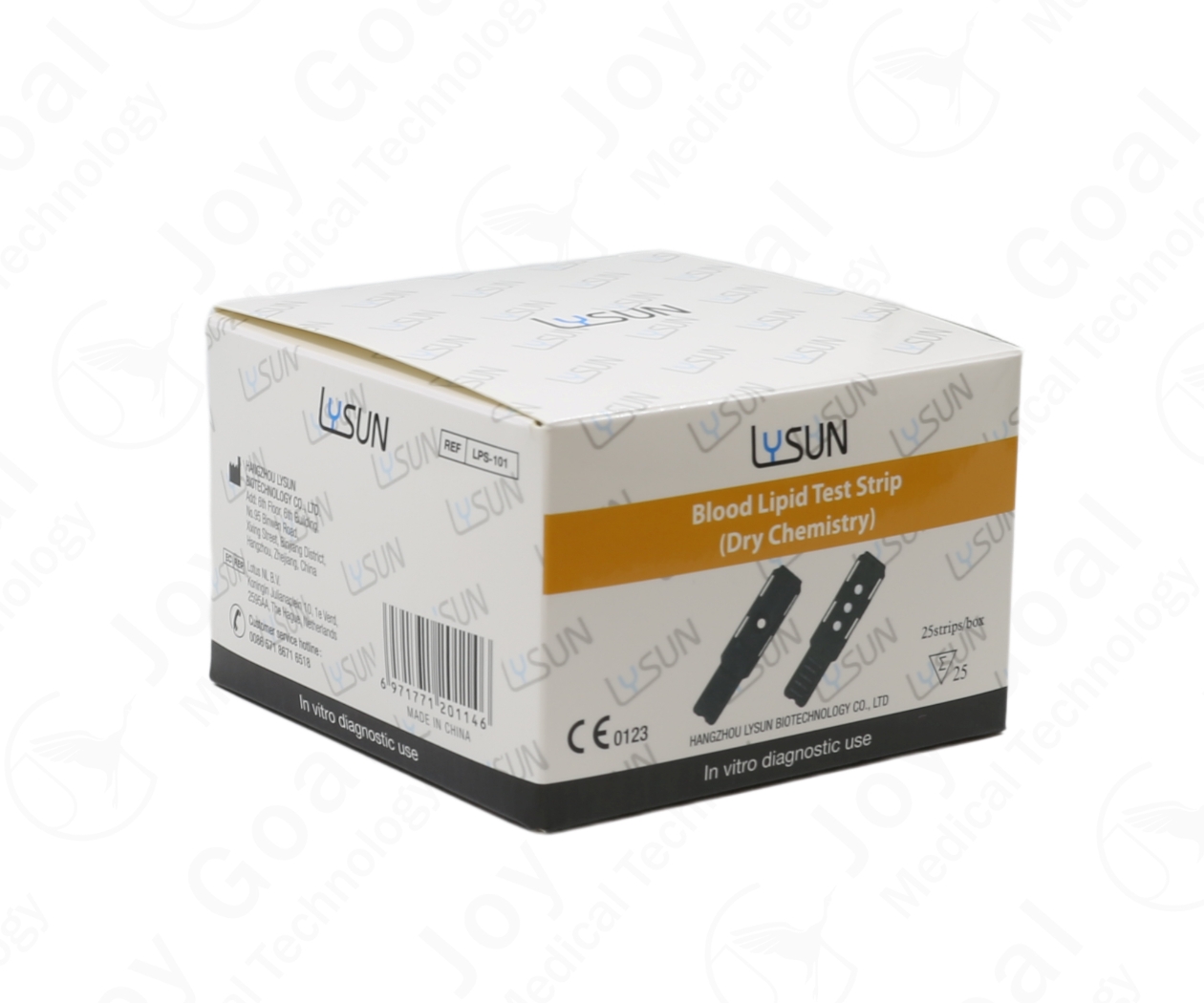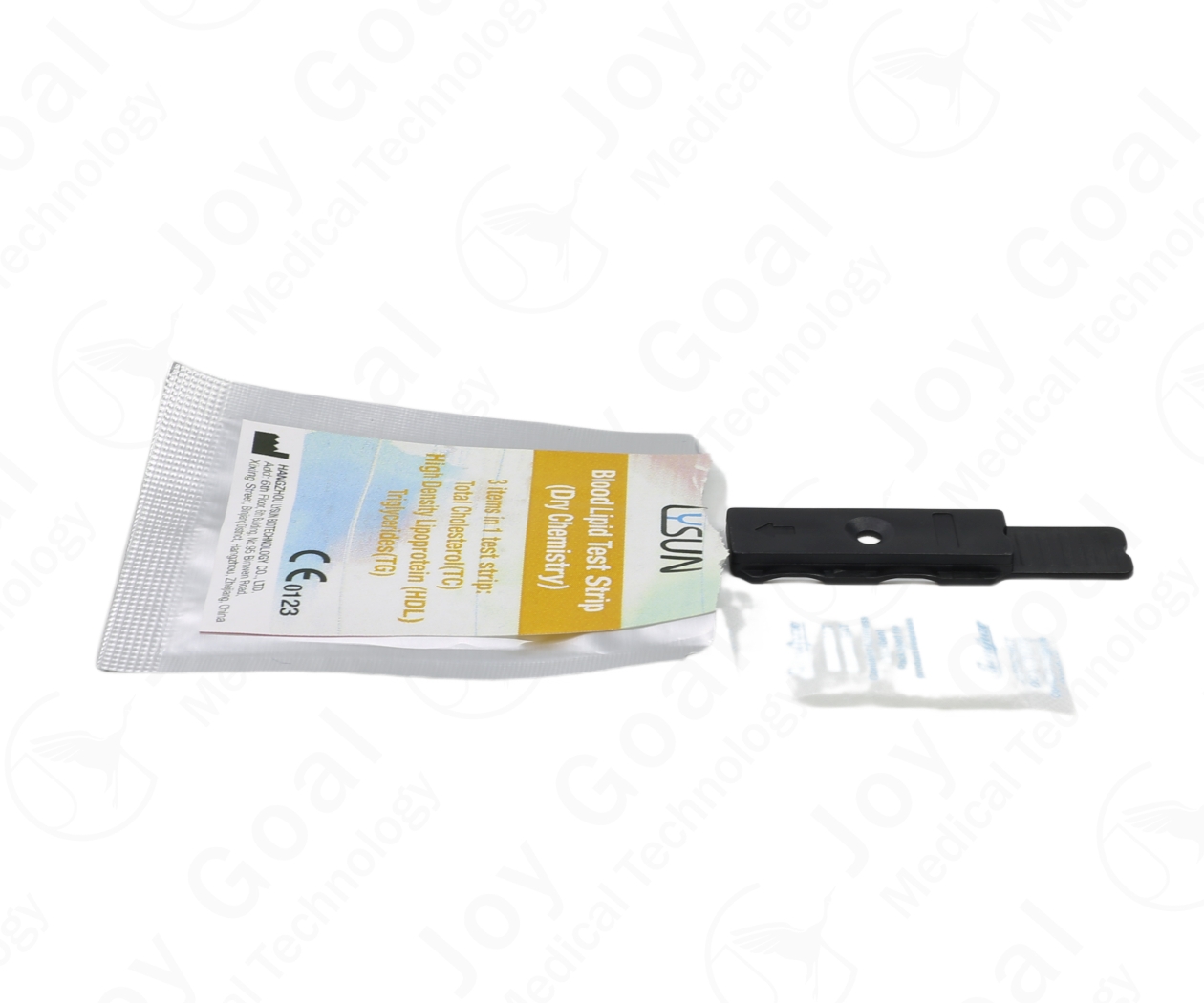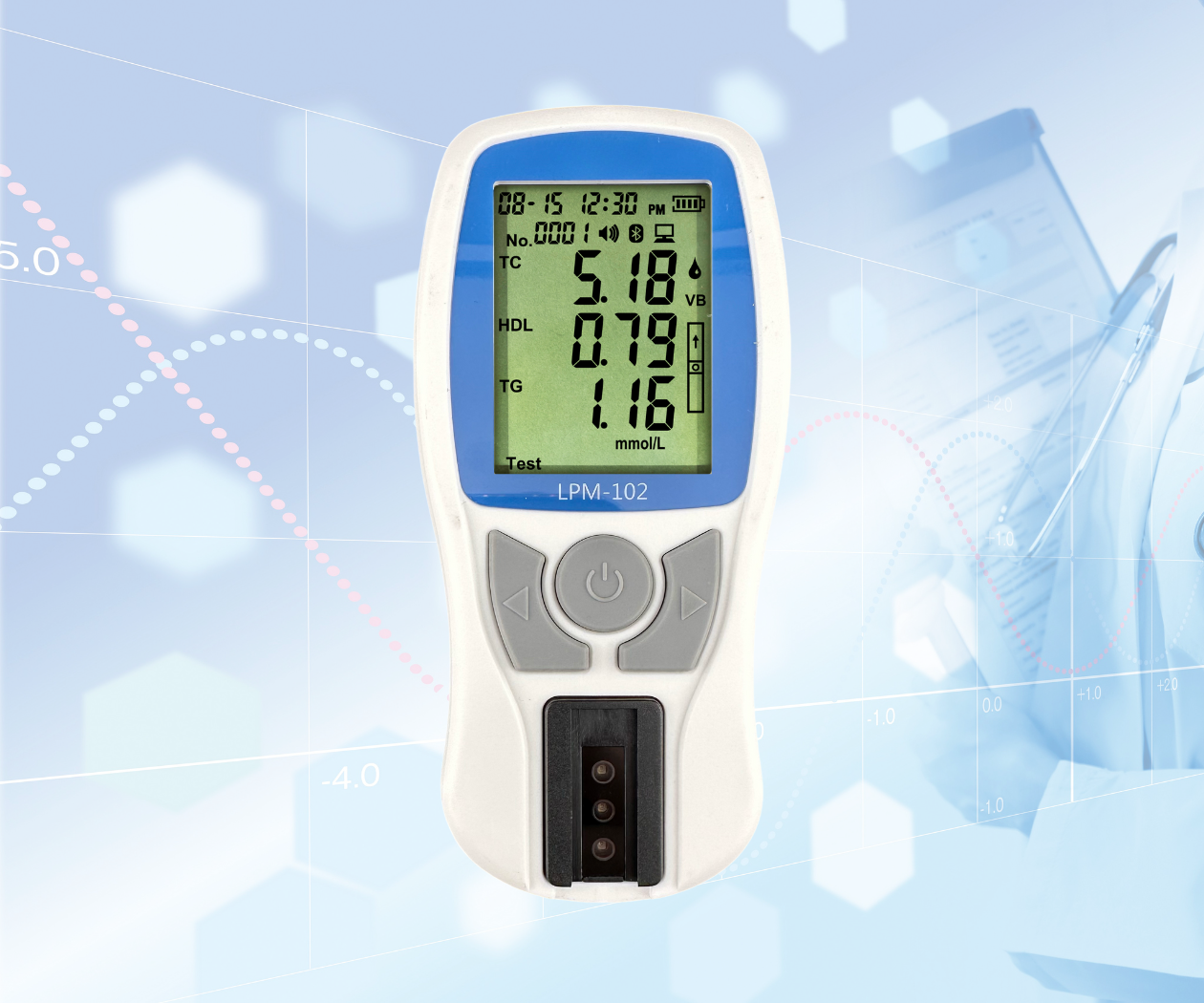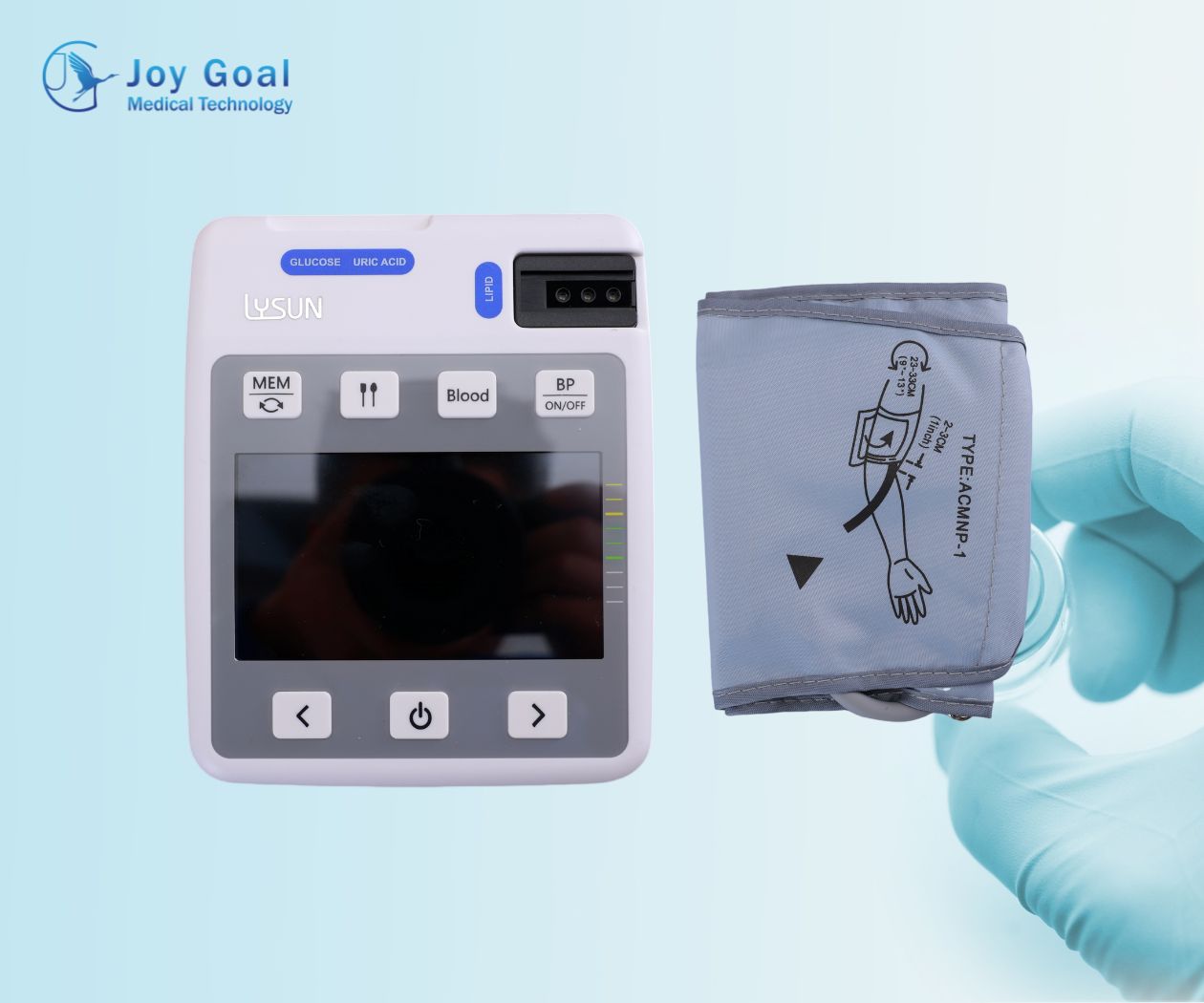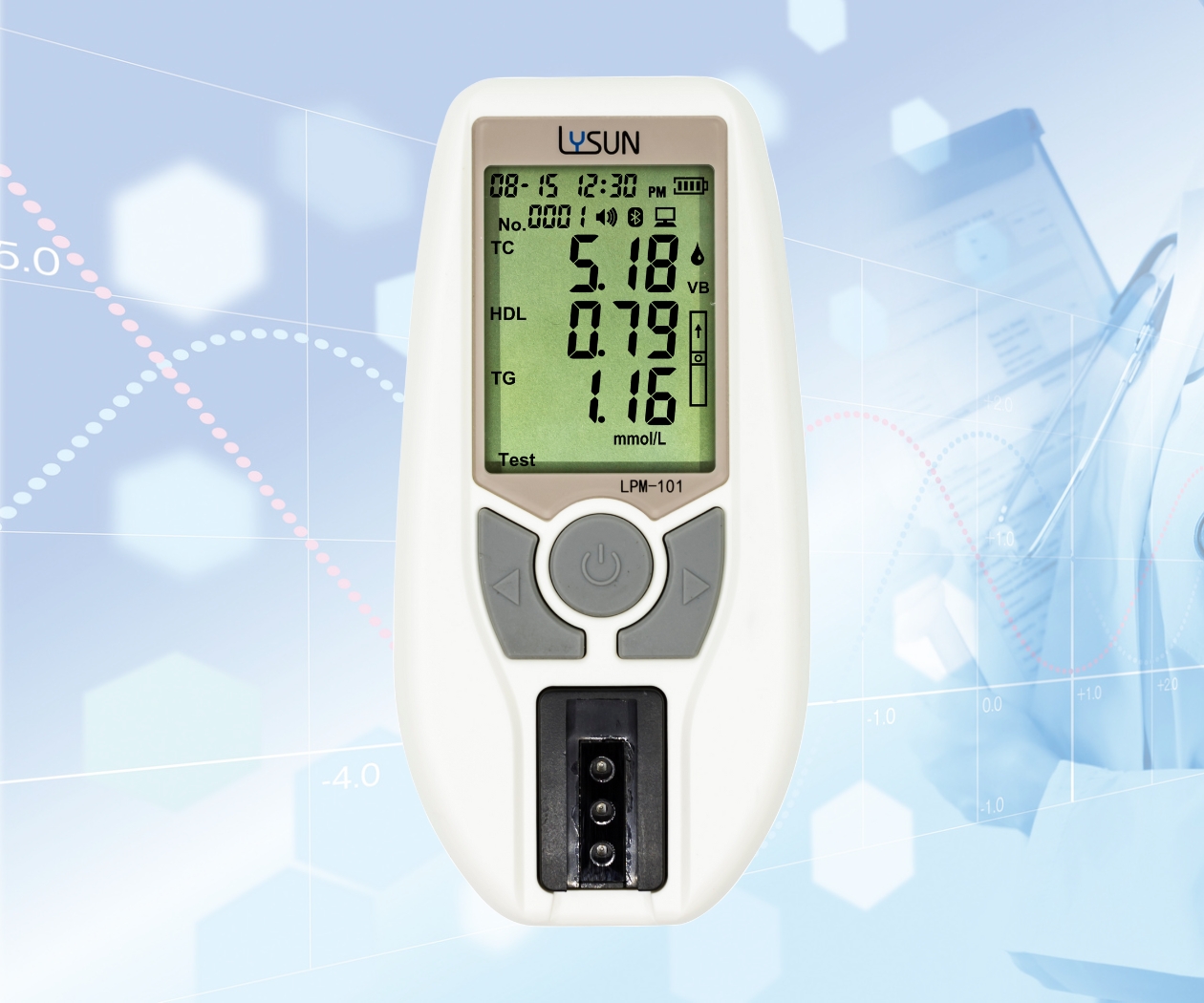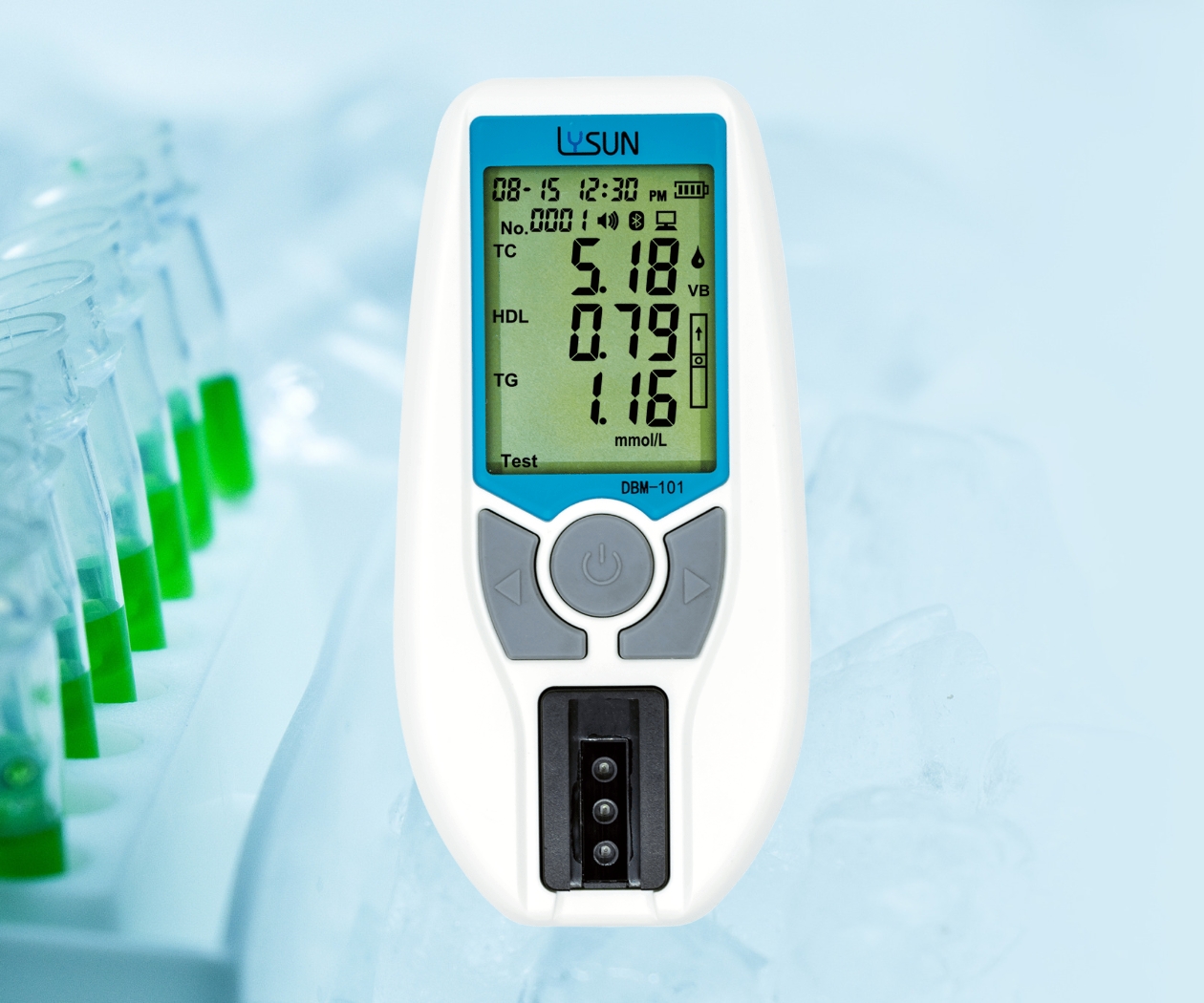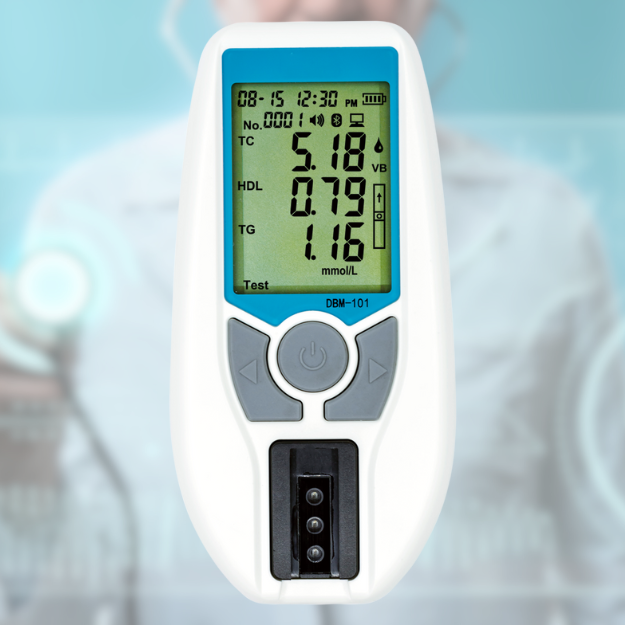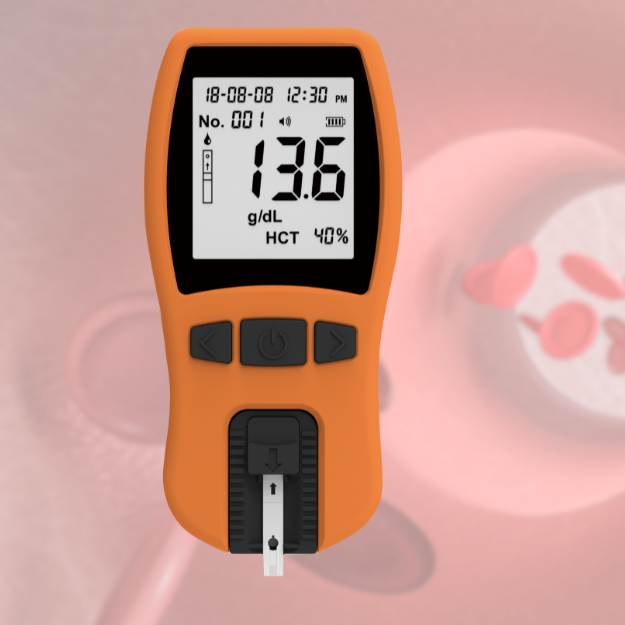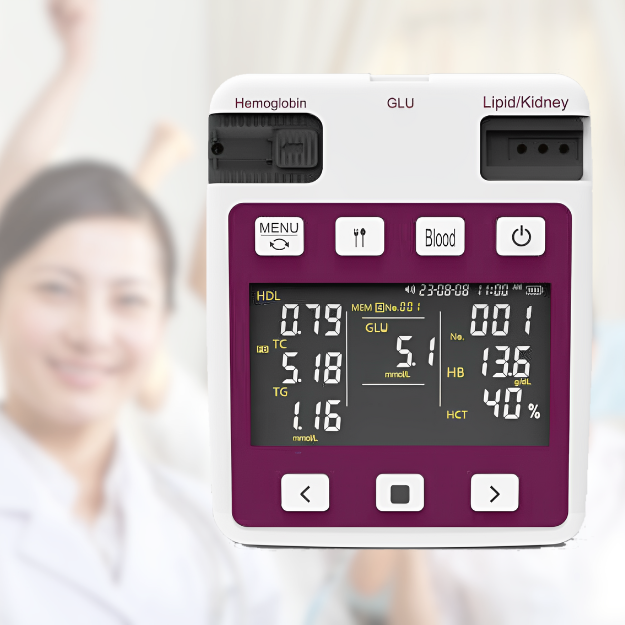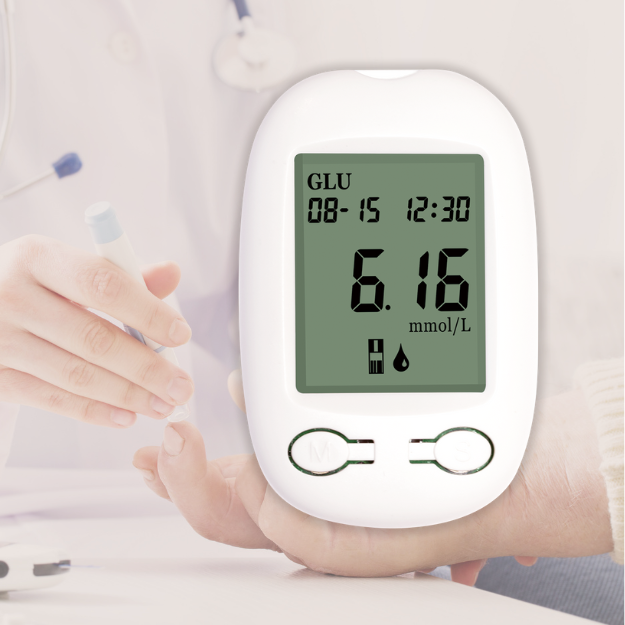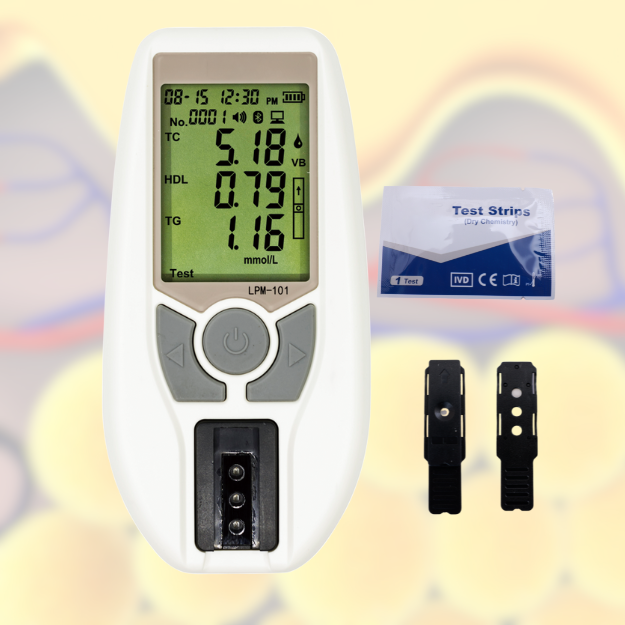Blood Lipid Test Strip (LPS-101)
introduction
| Modle | LPS-101 |
|---|---|
| Analysis Items | Total Cholesterol (TC), High Density Lipoprotein (HDL), Triglyceride (TG), Low Density Lipoprotein (LDL) |
| Specimen | Whole blood(peripheral and venous human whole blood), plasma and serum |
| Features | Multi-function, Wide Test Range, Accurate, Quality Assurance, 3 in 1 |
Feature

Multi-function
One strip with 3 Test items

Wide Range
Maximum measurement range
in same function POCT meter

Accurate
Same level of accuracy with Biochemical Analyzer
The Blood Lipid Test Strip (Dry Chemistry) work with the Blood Lipid Analysis Meter (LPM-101) or Dry Biochemical Analysis Meter (DBM-101) to measure the lipid concentration in whole blood, plasma and serum. For professional use or self-testing use.
The 3-1 Lipid Panel is used to measure the concentrations of Total Cholesterol (TC), High Density Lipoprotein Cholesterol (HDL) and Triglycerides (TG). It is also used to calculate LDL, TC/HDL. Lipid measurements are used in the diagnosis and treatment of atherosclerotic coronary artery disease and in the diagnosis of metabolic disorders involving lipids and lipoproteins.
PRINCIPLE
The Blood Lipid Test Strip (Dry Chemistry) use a timed-endpoint method to measure the Total Cholesterol (TC), High Density Lipoprotein Cholesterol (HDL) and Triglycerides (TG) concentrations in whole blood, serum or plasma. The concentration of Low Density LipoproteinCholesterol (LDL) is calculated by the values of TC, TG and HDL. The system monitors the change in absorbance at 620 nm at a fixed-time interval. The change in absorbance is directly proportional to the concentration of lipid in the specimen.
TC: The free cholesterol is oxidized to cholesten-3-one and hydrogen peroxide by cholesterol oxidase. Peroxidase catalyzes the reaction of hydrogen peroxide with 4-aminoantipyrine and phenol to produce a colored quinoneimine product.
HDL: The dextran slulphate/Mg2+on the test strip precipitates the chylomicrons, VLDL and LDL, leaving HDL in the specimen. The cholesterol concentration of this HDL is then determined enzymatically, the same as TC.
TG: Triglycerides in the specimen are hydrolyzed to glycerol and free fatty acids by the action of lipase. A sequence of three coupled enzymatic steps using glycerol kinase (GK), glycerophosphate oxidase (GPO), and peroxidase (POD) causes the oxidative coupling of 4-aminoantipyrine to form a blue dye.
LDL: When the concentration of TG in the specimen is equal to or lower than 400mg/dL, LDL concentration can be calculated by the meter with the following equation: LDL=TC-HDL-TG/2.2(mmol/L); LDL=TC-HDL-TG/5(mg/dL)
Specfication
| Feature | Specifications |
|---|---|
| Methodology | Reflectance Photometer |
| Test Time | Total Cholesterol (TC), High Density Lipoprotein Cholesterol (HDL), Triglycerides (TG) ≤2 min; |
| Measurement Range |
|
| Specimen | Whole blood(peripheral and venous human whole blood), plasma and serum |
| Specimen Volume | 35 μL |
| Units of Measurement | mg/dL, mmol/L |
| Meter storage and transportationt conditions | 0 - 55°C; ≤90% RH |
| System Operating Conditions | 10 - 35°C; ≤80% RH; indoor only |
Accurate
Blood Lipid Analysis Items
Total Cholesterol (TC)
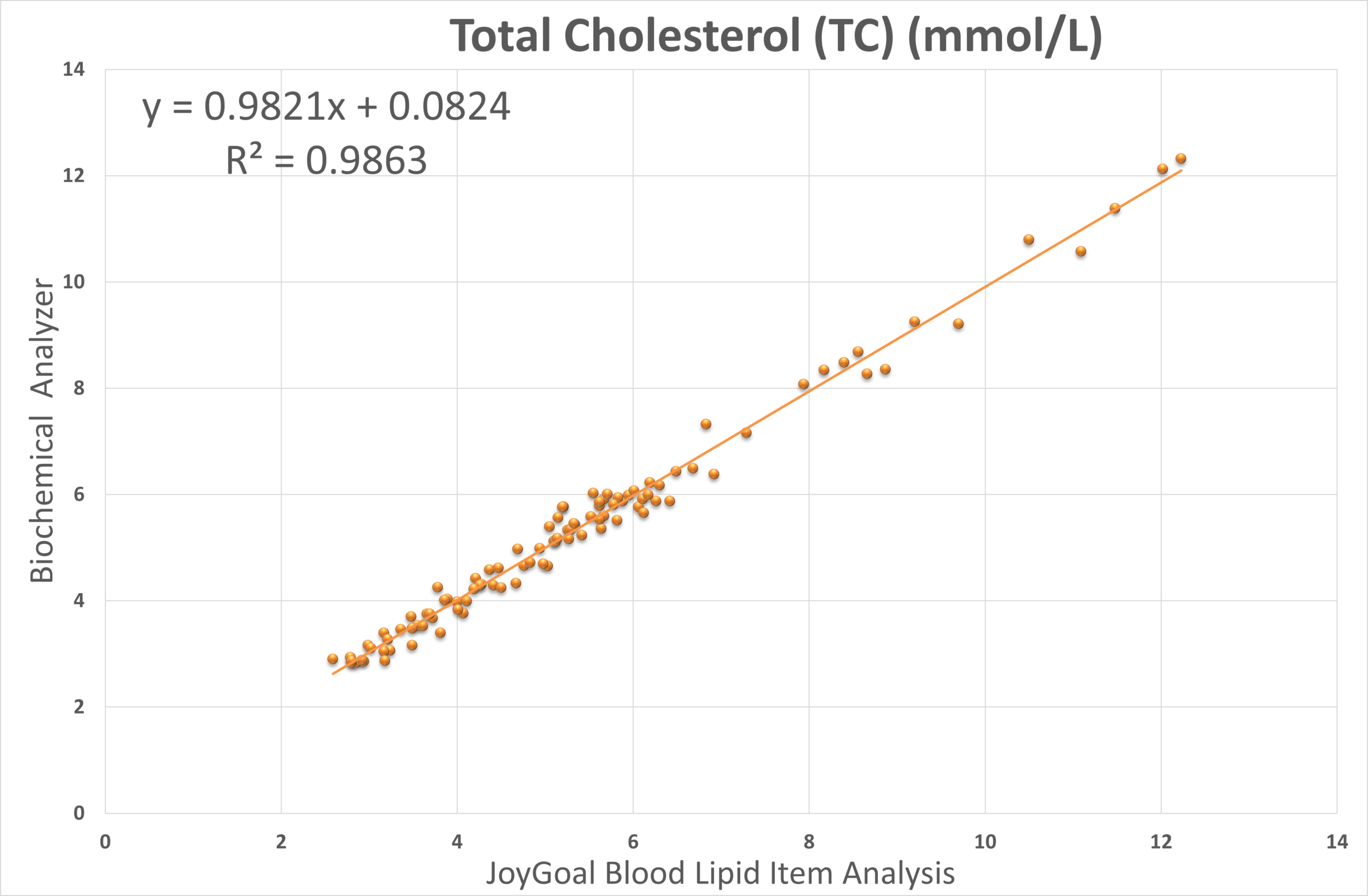
High-density Lipoprotein (HDL)
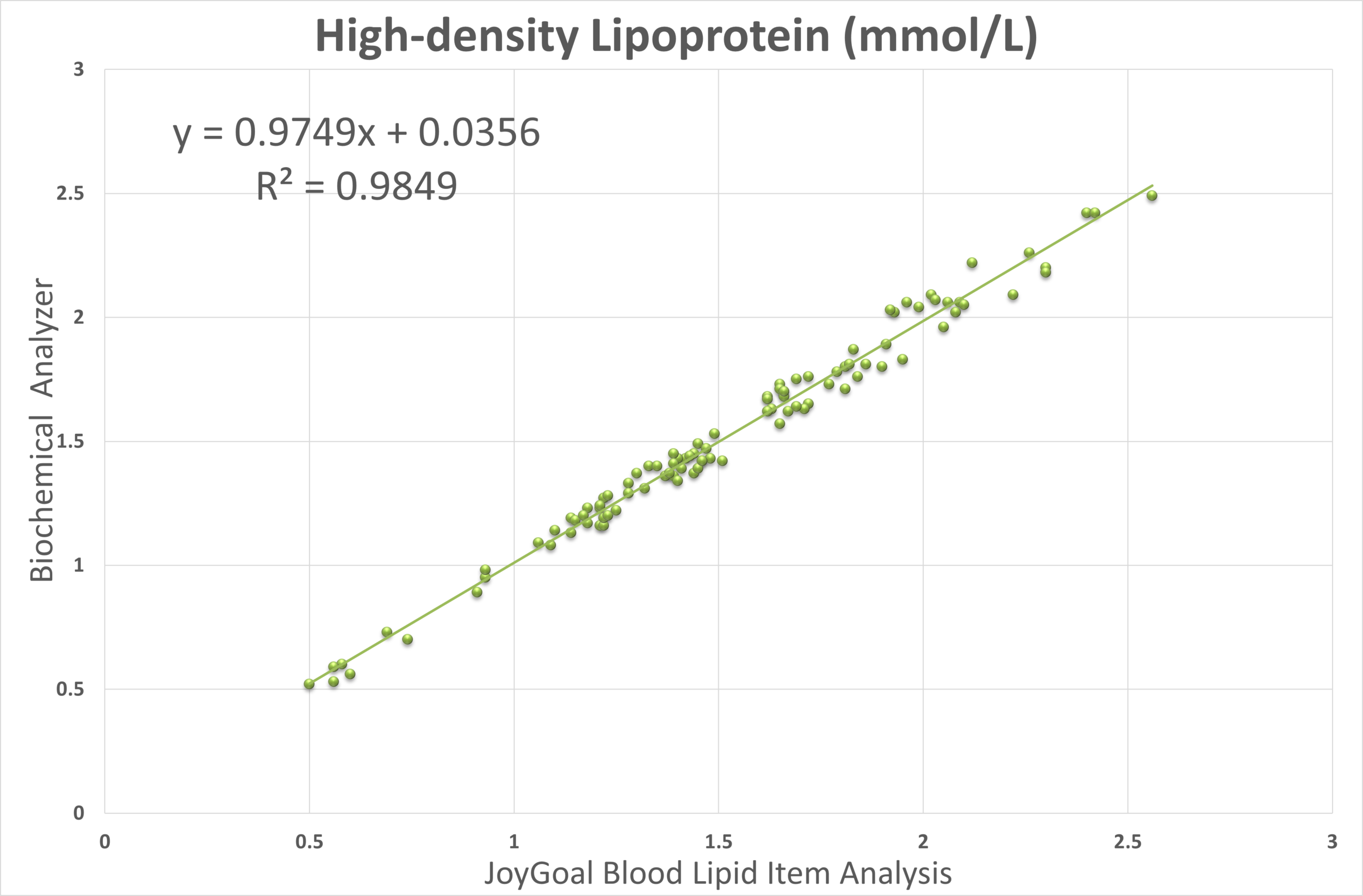
Triglycerides (TG)
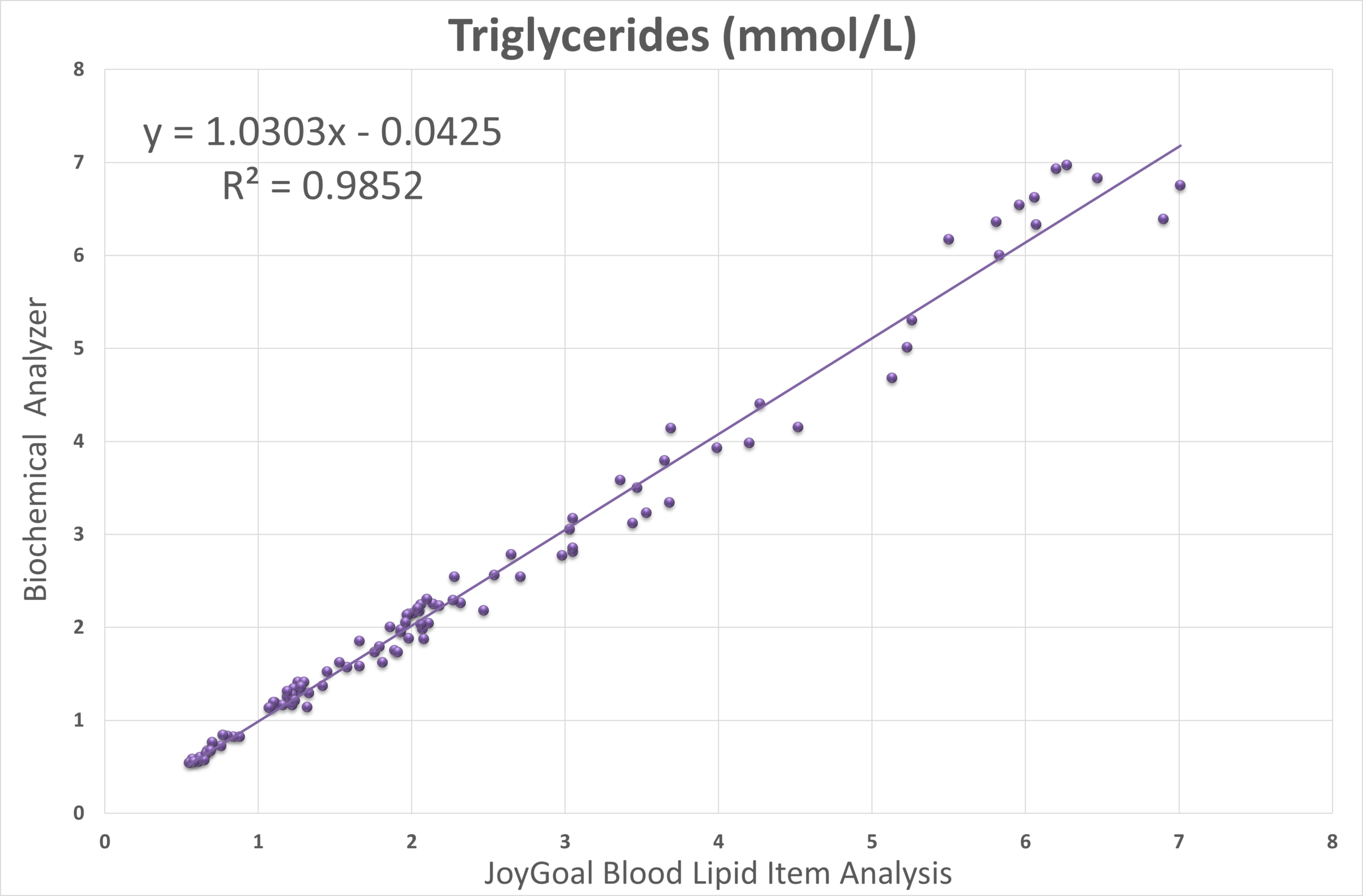
Procedure
Packing
